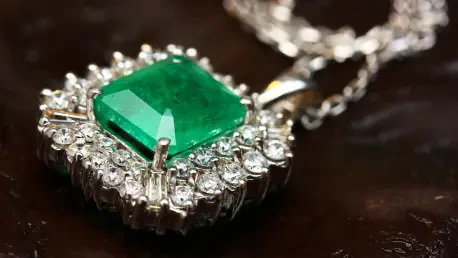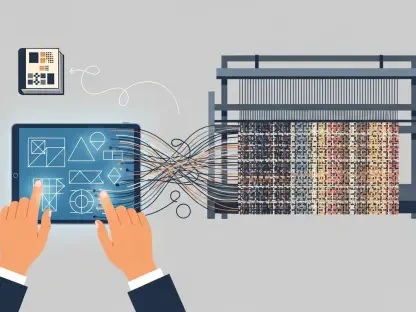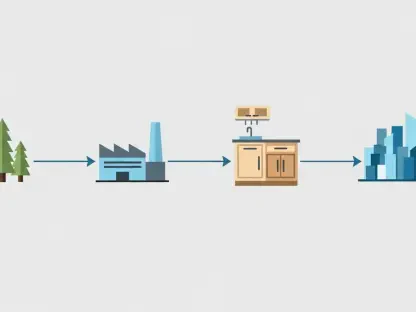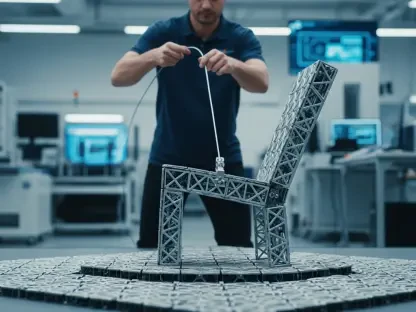As the jewelry industry faces increasing demands for innovation, Additive Manufacturing emerges as a game-changer, offering unprecedented possibilities in design and production techniques. This technology challenges traditional methods and ignites a new era of creativity and efficiency within the sector. By facilitating intricate designs that were once deemed impossible, Additive Manufacturing enables creators to explore new artistic horizons and meet evolving consumer preferences. This review delves into the implications of this technology for the jewelry sector, scrutinizing its capabilities and transformative potential.
An In-Depth Exploration of Additive Manufacturing in Jewelry
Additive Manufacturing, often referred to as 3D printing, involves the creation of objects by adding material layer by layer following a digital model. Within the jewelry sector, this technology has forged new paths by allowing jewelers to craft highly detailed and complex designs. Its introduction marked a significant innovation, allowing for customization and precision that traditional manufacturing methods simply could not afford. As a result, Additive Manufacturing has become synonymous with advancements in jewelry design, acting as a conduit for technological progress and creative innovation.
The evolution of Additive Manufacturing within jewelry is a testament to its adaptability and relevance in an industry marked by both artistic expression and technological necessity. This technology cultivates an environment ripe for experimentation, as it aligns with broader technological advancements and industry innovations. It enhances not only the design possibilities but also the functional aspects of jewelry, setting new standards and expectations for creators and consumers alike.
Pioneering Features of Additive Manufacturing in Jewelry
Metal Laser Beam Powder Bed Fusion: Revolutionizing Craftsmanship
Metal Laser Beam Powder Bed Fusion (PBF-LB) stands at the forefront of Additive Manufacturing applications in jewelry, laying the groundwork for intricate and strong metal pieces. PBF-LB utilizes laser technology to selectively fuse powdered metal into complex shapes, providing jewelers with the ability to produce high-strength jewelry items. The nature of this process unlocks a realm of possibilities, especially for metals like platinum, renowned for their durability and aesthetic appeal. By leveraging PBF-LB, jewelers can maintain immaculate details while ensuring structural integrity, a critical consideration in premium jewelry.
Design Flexibility: Elevating Artistic Potential
Additive Manufacturing brings unparalleled design flexibility and complexity to jewelry making, liberating designers from the constraints of traditional manufacturing. Its capability to render intricate patterns and structures, such as delicate lattices and hollow forms, has transformed jewelry aesthetics, enabling designers to realize visions previously deemed unattainable. This flexibility not only enhances creativity but also aligns with the growing consumer demand for unique and personalized jewelry, satisfying an increasingly discerning audience.
Recent Advancements and Market Trends
In recent years, the jewelry industry has witnessed a surge of advancements in Additive Manufacturing technologies, setting the stage for transformative trends and consumer behaviors. Notably, the launch of the Tùsaire collection by Platinum Guild International (PGI) symbolizes pivotal progress, showcasing intricate platinum pieces produced through Additive Manufacturing. These developments signify a broader trend toward customization, where the consumer desires jewelry that mirrors personal style and unique taste.
Shifting consumer behavior plays a significant role, with individuals increasingly seeking jewelry that represents both innovation and personalization. As Additive Manufacturing continues to evolve, its influence on product customization and industry innovations becomes increasingly apparent. Its ability to align with these shifts in consumer preference underpins its potential growth trajectory and enduring appeal within the jewelry sector.
Practical Applications in Jewelry
The application of Additive Manufacturing in the jewelry industry is marked by notable examples that highlight its transformative impact on production and design processes. The Tùsaire collection exemplifies Additive Manufacturing’s potential to redefine jewelry design, where the adoption of advanced metal fusing techniques results in both intricate and robust platinum pieces. This groundbreaking initiative, designed by Maeve Gillies, represents a fusion of art and innovation, embodying the transformative power of Additive Manufacturing.
Across various sectors within the jewelry industry, Additive Manufacturing continues to challenge the status quo, influencing design paradigms and production efficiencies. It facilitates new creative approaches, elevating artistic standards and presenting opportunities for differentiation in a competitive market. These applications indicate a broader acceptance of Additive Manufacturing as a cornerstone for progressive jewelry design and production.
Confronting Challenges and Limitations
Despite its numerous advantages, Additive Manufacturing in jewelry is not without challenges, spanning technical, regulatory, and market spheres. Technically, achieving consistent material quality and surface finish can be formidable, especially when dealing with precious metals. Additionally, regulatory frameworks and industry standards are adapting to keep pace with these technological advancements, posing hurdles to widespread adoption.
Market challenges also abound, with cost considerations and consumer education being pivotal to acceptance and integration. Nevertheless, ongoing research and initiatives aim to address these obstacles, focusing on refining techniques and enhancing the technology’s accessibility to a broader range of designers. As these efforts progress, the potential for overcoming current limitations remains promising.
Navigating the Future of Additive Manufacturing in Jewelry
Looking ahead, Additive Manufacturing holds vast potential for further breakthroughs and industry transformations. The continued advancement of technology promises new horizons, encouraging designers to push the boundaries of creativity and functionality in jewelry. As the integration of this technology within jewelry-making practices deepens, its long-term impacts on industry standards and consumer expectations will become increasingly pronounced, reshaping the sector itself.
The societal implications of Additive Manufacturing extend beyond design enhancements, influencing practices around sustainability and ethical production. As an enabler of resource-efficient manufacturing, Additive Manufacturing aligns with the increasing call for eco-consciousness within the jewelry industry, promoting sustainable practices and production accountability.
Impressions and Conclusions
Overall, the advent of Additive Manufacturing in the jewelry industry represented a paradigm shift, unlocking new possibilities for design and production. This review highlighted its transformative influence, recognizing its ability to enhance artistic expression and meet sophisticated consumer demands. As technology continues to advance, it becomes clear that Additive Manufacturing is set to reshape the jewelry landscape, merging the worlds of craftsmanship and technology into a coherent and innovative whole. By addressing challenges and capitalizing on opportunities, the jewelry industry finds itself on the precipice of a new era, characterized by creativity, efficiency, and unprecedented potential.









